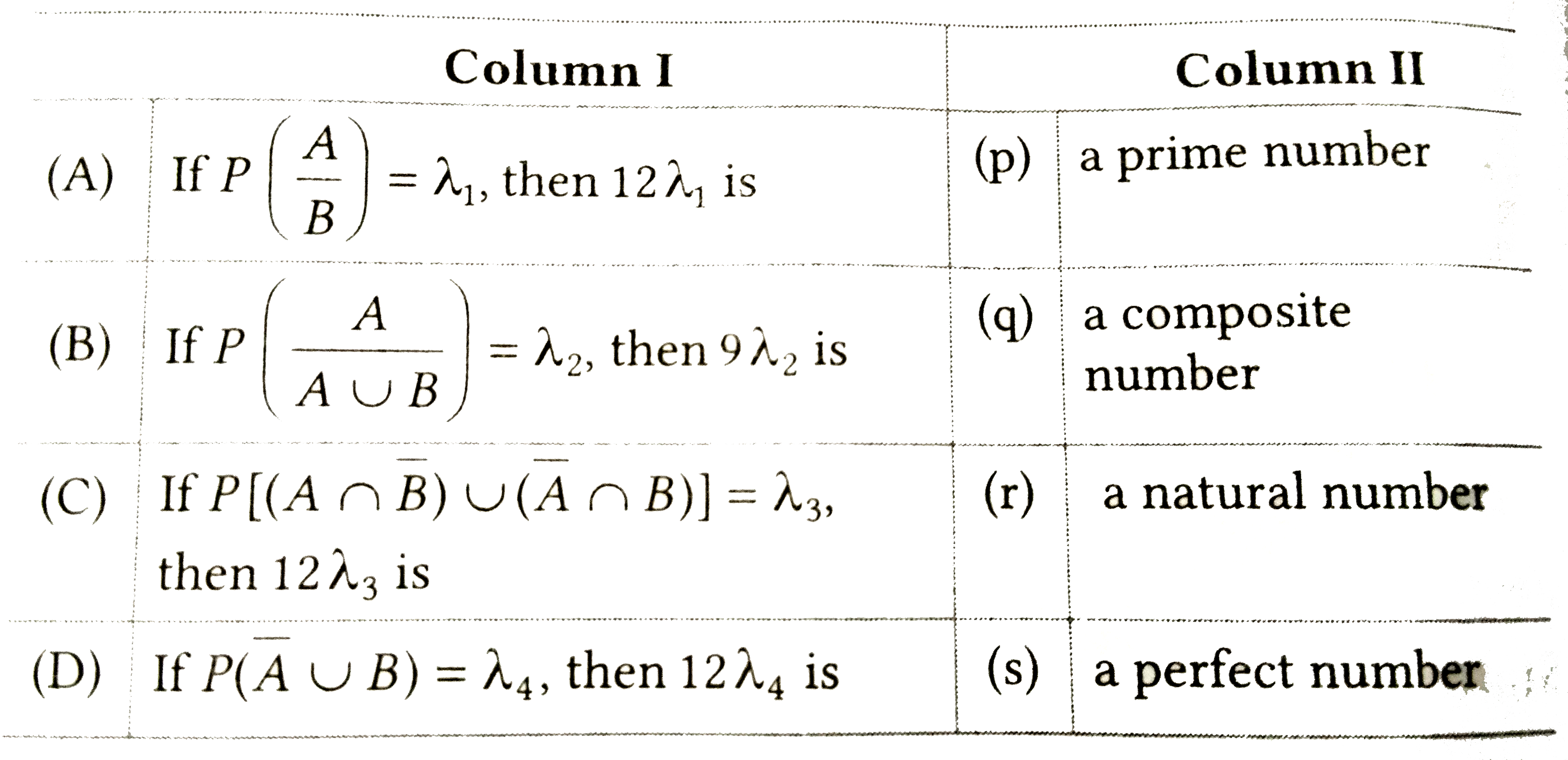A and B are two independent events such that P(A)=15,P(A∪B)=710. Then ,P(¯¯¯B)=
3/8
2/7
7/9
none of these
The correct Answer is:A
To solve the problem step by step, we need to find P(¯¯¯¯B) given that P(A)=15 and P(A∪B)=710, and that A and B are independent events.
Step 1: Write down the known probabilities
We have:
- P(A)=15
- P(A∪B)=710
Step 2: Use the formula for the probability of the union of two events
The formula for the probability of the union of two independent events is:
P(A∪B)=P(A)+P(B)−P(A∩B)
Since A and B are independent, we can express P(A∩B) as:
P(A∩B)=P(A)⋅P(B)
Step 3: Substitute the known values into the formula
Substituting the known values into the union formula:
710=15+P(B)−P(A)⋅P(B)
This can be rewritten as:
710=15+P(B)−15⋅P(B)
Step 4: Simplify the equation
First, convert 15 to have a common denominator with 710:
15=210
Now, substitute this back into the equation:
710=210+P(B)−15⋅P(B)
This simplifies to:
710=210+P(B)−15P(B)
Step 5: Combine like terms
Let P(B)=x:
710=210+x−15x
Convert 15x to have a common denominator:
15x=210x
Now, substitute:
710=210+x−210x
This simplifies to:
710=210+1010x−210x
710=210+810x
Step 6: Isolate x
Subtract 210 from both sides:
710−210=810x
510=810x
Multiply both sides by 108:
x=58
Thus, P(B)=58.
Step 7: Find P(¯¯¯¯B)
Now, we need to find P(¯¯¯¯B):
P(¯¯¯¯B)=1−P(B)=1−58=38
Final Answer
Thus, the probability P(¯¯¯¯B) is:
38
We have:
- P(A)=15
- P(A∪B)=710
The formula for the probability of the union of two independent events is:
P(A∪B)=P(A)+P(B)−P(A∩B)
Since A and B are independent, we can express P(A∩B) as:
P(A∩B)=P(A)⋅P(B)
Substituting the known values into the union formula:
710=15+P(B)−P(A)⋅P(B)
This can be rewritten as:
710=15+P(B)−15⋅P(B)
First, convert 15 to have a common denominator with 710:
15=210
Now, substitute this back into the equation:
710=210+P(B)−15⋅P(B)
This simplifies to:
710=210+P(B)−15P(B)
Let P(B)=x:
710=210+x−15x
Convert 15x to have a common denominator:
15x=210x
Now, substitute:
710=210+x−210x
This simplifies to:
710=210+1010x−210x
710=210+810x
Subtract 210 from both sides:
710−210=810x
510=810x
Multiply both sides by 108:
x=58
Thus, P(B)=58.
Now, we need to find P(¯¯¯¯B):
P(¯¯¯¯B)=1−P(B)=1−58=38
Thus, the probability P(¯¯¯¯B) is:
38
Topper's Solved these Questions
- PROBABILITY BOOK - OBJECTIVE RD SHARMA ENGLISHCHAPTER - PROBABILITY EXERCISE - Section II - Assertion Reason Type
22 Videos
- PERMUTATIONS AND COMBINATIONSBOOK - OBJECTIVE RD SHARMA ENGLISHCHAPTER - PERMUTATIONS AND COMBINATIONSEXERCISE - Chapter Test
60 Videos
- QUADRATIC EXPRESSIONS AND EQUATIONS BOOK - OBJECTIVE RD SHARMA ENGLISHCHAPTER - QUADRATIC EXPRESSIONS AND EQUATIONS EXERCISE - Chapter Test
50 Videos
Similar Questions
If A and B are two independent events, such that P(A)=13andP(B)=14.

View SolutionIf A and B are two independent events such that P (A) =1/2,P(B)=1/5, then
View SolutionIf AandB are two independent events such that P(B)=27,,P(A∪B)=0.8 then P(A)=
View SolutionIf A and B are two independent events such that P(B) = 27,P(A∪Bc)=0.8, then find P(A).
View SolutionIf A and B are two independent events such that P(¯¯¯A∩B)=2/15 and P(A∩¯¯¯B)=1/6, then P(B), is
View SolutionLet A and B are two independent events such that P(B)=12 and P(A∩B)=110, then the value of 9P(¯¯¯AA∪B) is
View SolutionIf A and B are two independent events, then P( A and B)=P(A)⋅P(B)
View SolutionIf A and B are two independent events such that P(A)=12 and P(B)=15 then which of the following is correct ?
View SolutionIf A and B are independent events such that P(A)>0,P(B)>0, then
View SolutionA and B are two independent events such that P(A) = 0.8 and P(A∩→B)=0.3 Find P(B)
View Solution
